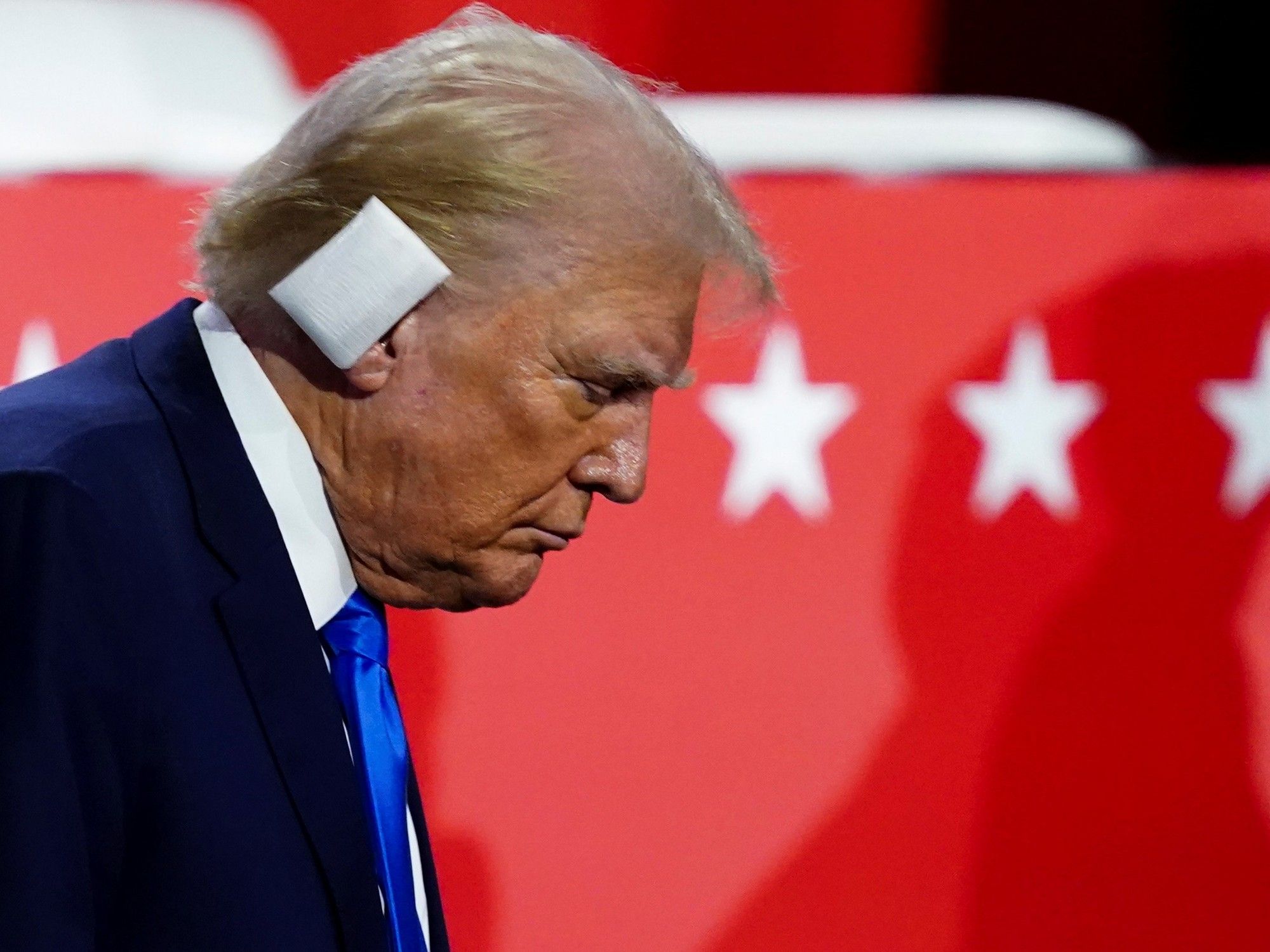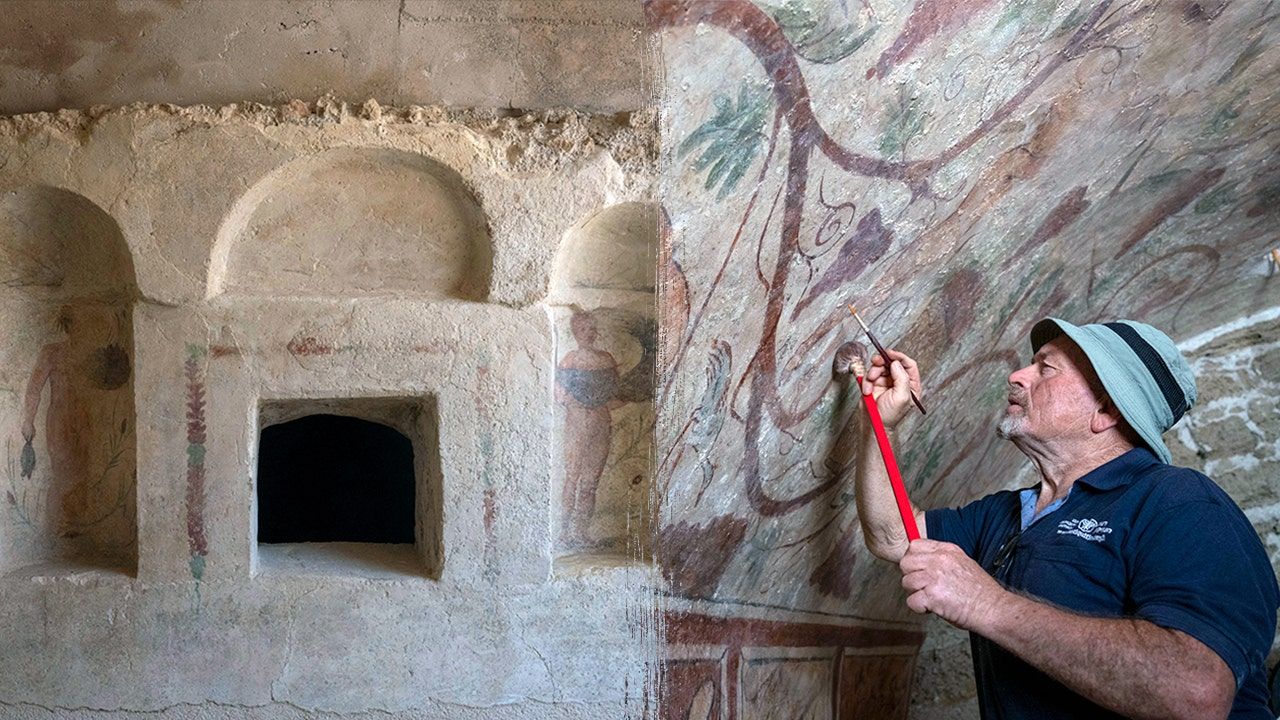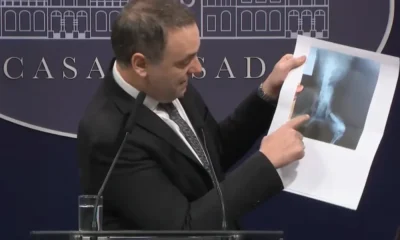INTERNACIONAL
Irán niega estar detrás del atentado a Donald Trump: «Rumores maliciosos»

Irán rechazó a través de su misión ante la ONU las acusaciones «maliciosas» sobre su presunta participación en el atentado que sufrió el expresidente estadounidense Donald Trump el sábado pasado.
El martes, la CNN afirmó que el Servicio Secreto de Estados Unidos había intensificado las medidas de seguridad en torno a Trump tras recibir información sobre un complot iraní para asesinarlo.
«Hay objetivos políticos malignos detrás de tales declaraciones», afirmó este miércoles el portavoz del Ministerio de Asuntos Exteriores iraní, Nasser Kanani.
Irán no tuvo ningún papel en el reciente ataque a Trump durante un mitin en Pennsylvania, añadió Kanani, que subrayó que que Teherán «está decidido a procesar al expresidente por su papel en el asesinato del excomandante iraní de las Fuerzas Qods, Ghassem Soleimani, en Bagdad en enero de 2020″, pero nunca ha estado ni estará involucrado en ningún ataque armado en su contra».
Soleimani era el comandante de la Fuerza Quds de la Guardia Revolucionaria iraní que murió en un ataque de un avión no tripulado estadounidense en Bagdad en enero de 2020.
La cadena CNN y otros medios informaron que una «fuente» había informado a las autoridades estadounidenses, hace semanas, de una presunta trama iraní para matar a Trump.
La cadena de noticias desvinculo no obstante su información del intento de asesinato sufrido por Trump el sábado en un acto de campaña en Pensilvania que se saldó con el exmandatario herido y un participante del evento muerto.
El embajador de Irán ante Naciones Unidas, Amir Saeid Iravani, rechazó as acusaciones contra Teherán calificándolas de “infundadas” y “políticamente motivadas”.
La amenza, según reporta AP, había llevado incluso al Servicio Secreto a reforzar la protección de Donald Trump antes del evento del fin de semana, pero los recursos adicionales destinados no impidieron que que el candidato resultase herido.
INTERNACIONAL
Israel opens tombs from Ancient Rome to the public for the first time: ‘wonderful paintings’

Tombs dating back to the ancient Roman era have been opened to the public for the first time after a meticulous restoration process, according to an announcement from the Israel Antiquities Authority.
The two tombs, estimated to be nearly 2,000 years old, were originally discovered by British archaeologists in the 1930s.
For nearly 100 years, the tombs were closed to the public to protect the paintings depicting vines, Roman deities, and mythological creatures.
ARCHAEOLOGISTS UNSEAL 2,000-YEAR-OLD TOMB, FIND MUMMY IN ‘EXCELLENT STATE’
The tombs, located in Ashkelon, Israel about 6 miles from the Gaza Strip, were ultimately renovated when the city decided to make the site an educational park for public visits.
They are located within a stones’ throw of the beach, and were likely a burial site for aristocratic Roman citizens in Ashkelon about 1,800 years ago.
A view of the archeological tomb site in Ashkelon, Israel, Tuesday, Aug. 27, 2024. The tomb with wall paintings depicting Greek mythological figures is at least 1,700 years old said the Israeli Antiquities Authority, whose workers are restoring the site. (AP Photo/Ohad Zwigenberg)
«This tomb has wonderful paintings that were preserved remarkably well, and that’s surprising considering that the time that has passed and the location next to the sea, the humidity, the sand, the winds, everything affects the plaster and the paintings,» said Anat Rasiuk, an archaeologist with the Antiquities Authority to the Associated Press.
ARCHAEOLOGISTS DISCOVER UNDERWATER MOSAIC BELIEVED TO DATE BACK TO ROMAN EMPIRE
The murals depict birds, children picking bunches of grapes, nymphs with lotus plants, and figures from Greek mythology that were adopted by the Romans like the head of Medusa and Demeter, the goddess of the harvest.
Some of the lime-based plaster paintings were removed from the tombs’ walls and taken off-site for restoration, where others were painstakingly cleaned and given touch-ups that look the same as the ancient pigment on-site.

A worker touches up an ancient wall drawing of Greek goddess Demeter at an archeological tomb site in Ashkelon, Israel, Tuesday Aug. 27, 2024. The tomb where the painting was found is at least 1,700 years old, says the Israeli Antiquities Authority, whose workers are restoring the site. (AP Photo/Ohad Zwigenberg)
The new educational park in Ashkelon will feature more archeological discoveries from ancient Roman times from around the city, like wine and olive presses and ancient sarcophaguses.
Another tomb discovered in the 1990s has been relocated to the educational park site and preserved, also featuring similar murals.

A view of the archeological tomb site in Ashkelon, Israel, Tuesday, Aug. 27, 2024. The tomb with wall paintings depicting Greek mythological figures is at least 1,700 years old said the Israeli Antiquities Authority, whose workers are restoring the site. (AP Photo/Ohad Zwigenberg)
Ashkelon was not just a Roman city, but also a Philistine one prior to that. Cemeteries discovered in the city date back to the early Iron Age, about 3,000 years ago.
Rockets in the early days of the war against Hamas affected Ashkelon, and materials from the U.S.-built pier ultimately beached on the coast of the Israeli city after some bad weather in early May.
CLICK HERE TO GET THE FOX NEWS APP
The Israel Antiquities Authority did not immediately respond to Fox News Digital’s request for comment.
The Associated Press contributed to this report.
-
POLITICA3 días ago
Milei le respondió a los senadores que aprobaron la reforma jubilatoria: “Son una manga de demagogos”
-
POLITICA2 días ago
Quién es el novio de Tamara Pettinato, el hombre que Cristina impulsó con el respaldo de La Cámpora
-
POLITICA2 días ago
El Gobierno comenzó la auditoría de 400.000 pensiones por invalidez laboral: detectaron fraude masivo
-
POLITICA18 horas ago
Nuevo ataque de Milei al periodismo: dijo que hostigan a Lemoine y volvió a cargar contra O’Donnell
-
POLITICA1 día ago
Denunciaron a la militante peronista Mayra Arena por defender la corrupción en la obra pública
-
CHIMENTOS2 días ago
El baile con que Evangelina Anderson enamoró a todos




























